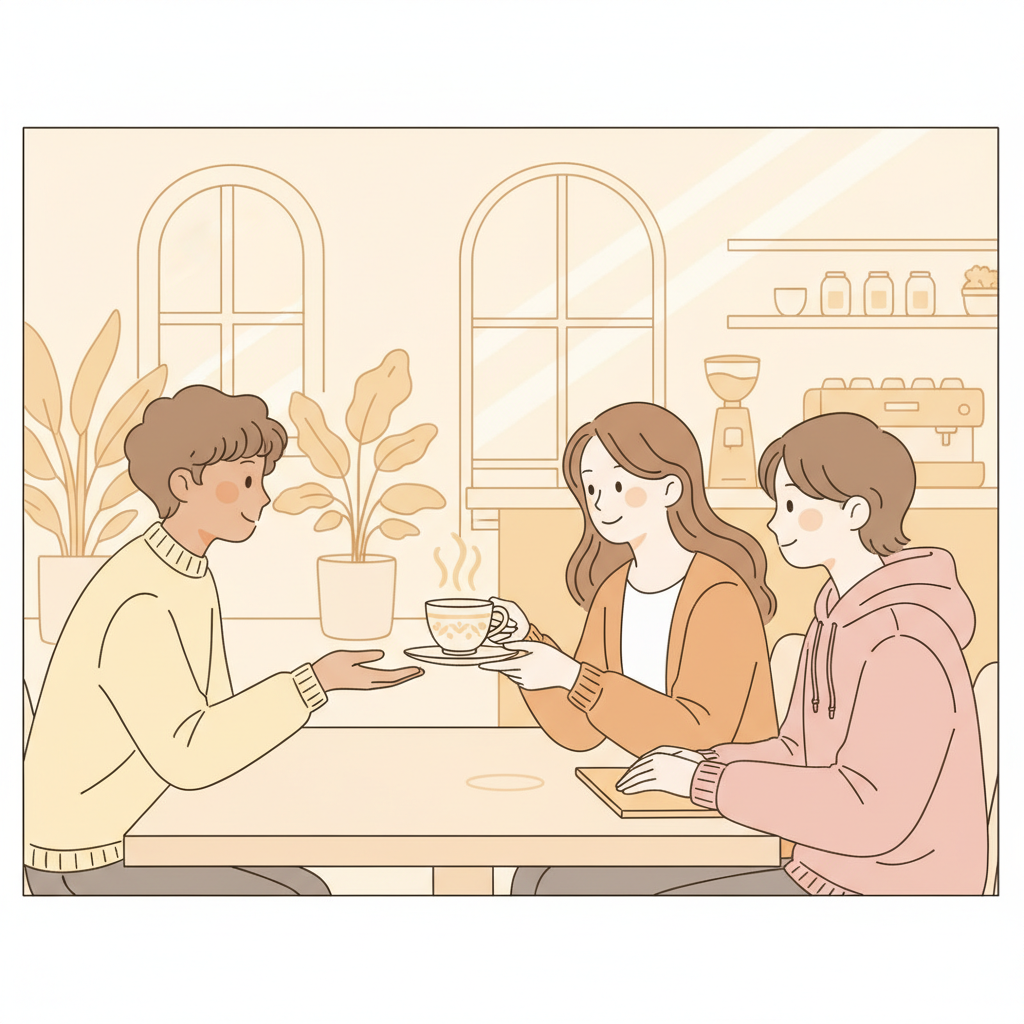⚡ Particle 一下 (yīxià) - Softening Actions

🇪🇸 ESPAÑOL
La partícula 一下 (yīxià) se coloca justo después de un verbo para indicar que la acción se realiza por un corto período de tiempo, de una manera breve o informal. Su función es suavizar el tono de una orden o sugerencia, haciéndola sonar más como una petición amable. Es muy similar a la duplicación del verbo (como en 看看, kànkan), que transmite una idea parecida de "echar un vistazo" en lugar de "mirar" de forma intensa.
🇬🇧 ENGLISH
The particle 一下 (yīxià) is placed right after a verb to indicate that the action is performed for a short period of time, in a brief or informal manner. Its function is to soften the tone of a command or suggestion, making it sound more like a polite request. It is very similar to verb reduplication (like 看看, kànkan), which conveys a similar idea of "taking a look" instead of "looking" intensely.
📚 Key Phrase: 你等一下,我马上就来。 (Nǐ děng yīxià, wǒ mǎshàng jiù lái.)
Grammar Focus
📝 Grammar Structure | Estructura Gramatical
🇪🇸 ESPAÑOL
Estructura básica:
Verbo + 一下 (yīxià)
Ejemplo: 等一下 (děng yīxià) = "esperar un momento"
Funciones de 一下:
- Suavizar peticiones: 帮我看一下 = "ayúdame a mirar un momento" (más amable que solo 帮我看)
- Indicar brevedad: 想一下 = "pensar un poco" (acción corta)
- Hacer sugerencias informales: 我们休息一下 = "descansemos un rato" (tono casual)
- Pedir permiso educadamente: 我可以用一下吗? = "¿puedo usar(lo) un momento?"
Diferencia con duplicación del verbo:
• 看一下 (kàn yīxià) = mirar brevemente
• 看看 (kànkan) = echar un vistazo (similar significado, estructura diferente)
⚠️ Importante: 一下 siempre va DESPUÉS del verbo, no antes.
🇬🇧 ENGLISH
Basic structure:
Verb + 一下 (yīxià)
Example: 等一下 (děng yīxià) = "wait a moment"
Functions of 一下:
- Soften requests: 帮我看一下 = "help me look for a moment" (more polite than just 帮我看)
- Indicate brevity: 想一下 = "think a bit" (short action)
- Make informal suggestions: 我们休息一下 = "let's rest a while" (casual tone)
- Ask permission politely: 我可以用一下吗? = "may I use (it) for a moment?"
Difference with verb reduplication:
• 看一下 (kàn yīxià) = look briefly
• 看看 (kànkan) = take a look (similar meaning, different structure)
⚠️ Important: 一下 always goes AFTER the verb, not before.
💡 Key Points | Puntos Clave
🇪🇸 ESPAÑOL
- 一下 va siempre DESPUÉS del verbo
- Suaviza peticiones y las hace más educadas
- Indica que la acción es breve o casual
- Muy común en el habla diaria coloquial
- Puede combinarse con verbos modales: 可以...一下吗?
- No cambia el significado base, solo el tono y duración
🇬🇧 ENGLISH
- 一下 always goes AFTER the verb
- Softens requests and makes them more polite
- Indicates the action is brief or casual
- Very common in everyday colloquial speech
- Can combine with modal verbs: 可以...一下吗?
- Doesn't change base meaning, only tone and duration
📚 Key Vocabulary | Vocabulario Clave
🇪🇸 Español
Estudia estas palabras clave antes de practicar las frases completas.
🇬🇧 English
Study these key words before practicing the complete phrases.
词汇 Vocabulary
文化 Cultural Insights
🇪🇸 REFLEXIÓN CULTURAL
El uso frecuente de 一下 (yīxià) en China refleja una cultura que valora la cortesía y la comunicación indirecta para no imponerse a los demás. Pedir algo "un momentito" o "un poco" minimiza la carga de la petición, mostrando consideración por el tiempo y el espacio del otro. En España, aunque también somos educados, tendemos a ser más directos en nuestras peticiones.
Esta pequeña estructura gramatical es una ventana a la importancia de la armonía social y el respeto en las interacciones cotidianas chinas. Usar 一下 demuestra que eres consciente de que estás pidiendo un favor y que valoras la amabilidad del interlocutor al concedértelo.
🇬🇧 CULTURAL REFLECTION
The frequent use of 一下 (yīxià) in China reflects a culture that values politeness and indirect communication to avoid imposing on others. Asking for something "for a moment" or "a bit" minimizes the burden of the request, showing consideration for the other person's time and space. In Western cultures, although we are also polite, we tend to be more direct in our requests.
This small grammatical structure is a window into the importance of social harmony and respect in everyday Chinese interactions. Using 一下 demonstrates that you are aware you are asking for a favor and that you value the kindness of the person granting it to you.
作业 Homework & Practice
🇪🇸 TAREA
📝 Práctica con 一下 (yīxià)
Escribe 5 frases usando 一下 después de diferentes verbos para suavizar peticiones o indicar brevedad:
Ejemplo: 请你等一下,我去拿书。(Qǐng nǐ děng yīxià, wǒ qù ná shū.) - Por favor espera un momento, voy a coger el libro.
🇬🇧 HOMEWORK
📝 Practice with 一下 (yīxià)
Write 5 sentences using 一下 after different verbs to soften requests or indicate brevity:
Example: 请你等一下,我去拿书。(Qǐng nǐ děng yīxià, wǒ qù ná shū.) - Please wait a moment, I'm going to get the book.
Practice Checklist:
Ready for More?
Continue your Chinese learning journey with live classes on TikTok. Join thousands of students learning Mandarin every day!
Join Live Classes